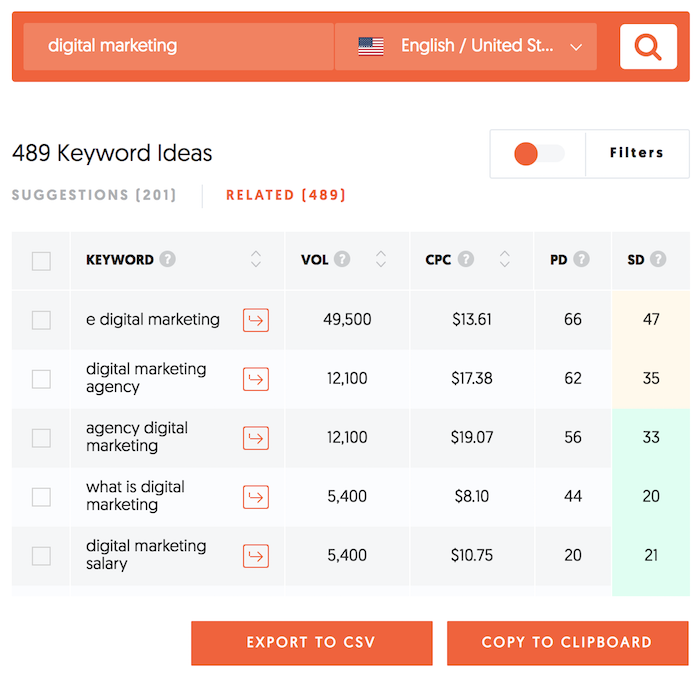People Also Search For: What is It and What Role It Plays in SEO

This post is also available in:
Pt
Es
What every publisher dreams of is getting more traffic. And all you need is to get an opportunity for that wherever you can.
So let’s see how Google can help with attracting more audience and more engagement and how big of a role keywords you use in your content play.
It is time to present you with “People also search for”.
Google’s feature “People also search for” is not new, but sure is a game changer, especially in terms of SEO.
In this article, we will explain what PASF (people also search for) does for you as a Google user, but the main focus will be on SEO practice and how it can improve your site’s ratings by attracting more organic traffic to your website.
Here we go.
What “People Also Search For” (PASF) is? How does it work?
The “People also search for” is Google’s feature that’s designed to help users find the adequate search result if their initial try wasn’t successful. What it means is Google will display a box with alternative suggestions AFTER a person clicks on a SERP’s result and returns to the result page right away.
When you make this move Google knows it didn’t meet your needs. So the search engine then tries to help by presenting similar keywords in the PASF box, based on what other people were searching for regarding the main query.
“People also search for” was introduced by Google at the beginning of 2018, alongside knowledge graphs.
The idea is to offer you something quite similar to what you entered as the main keyword, or to take you to a more specific keyword.
So it’s pretty much a search engine layout strategy.
“PASF are search suggestions that appear in Google search results when someone searches for a certain keyword or phrase. These suggestions are based on the user’s original query and other related terms that other people have searched for,”
– Chief Executive Officer at AkMarketing, Franyer Rivas explained.
But let us show you what PASF looks like, just so you can get a clearer picture:
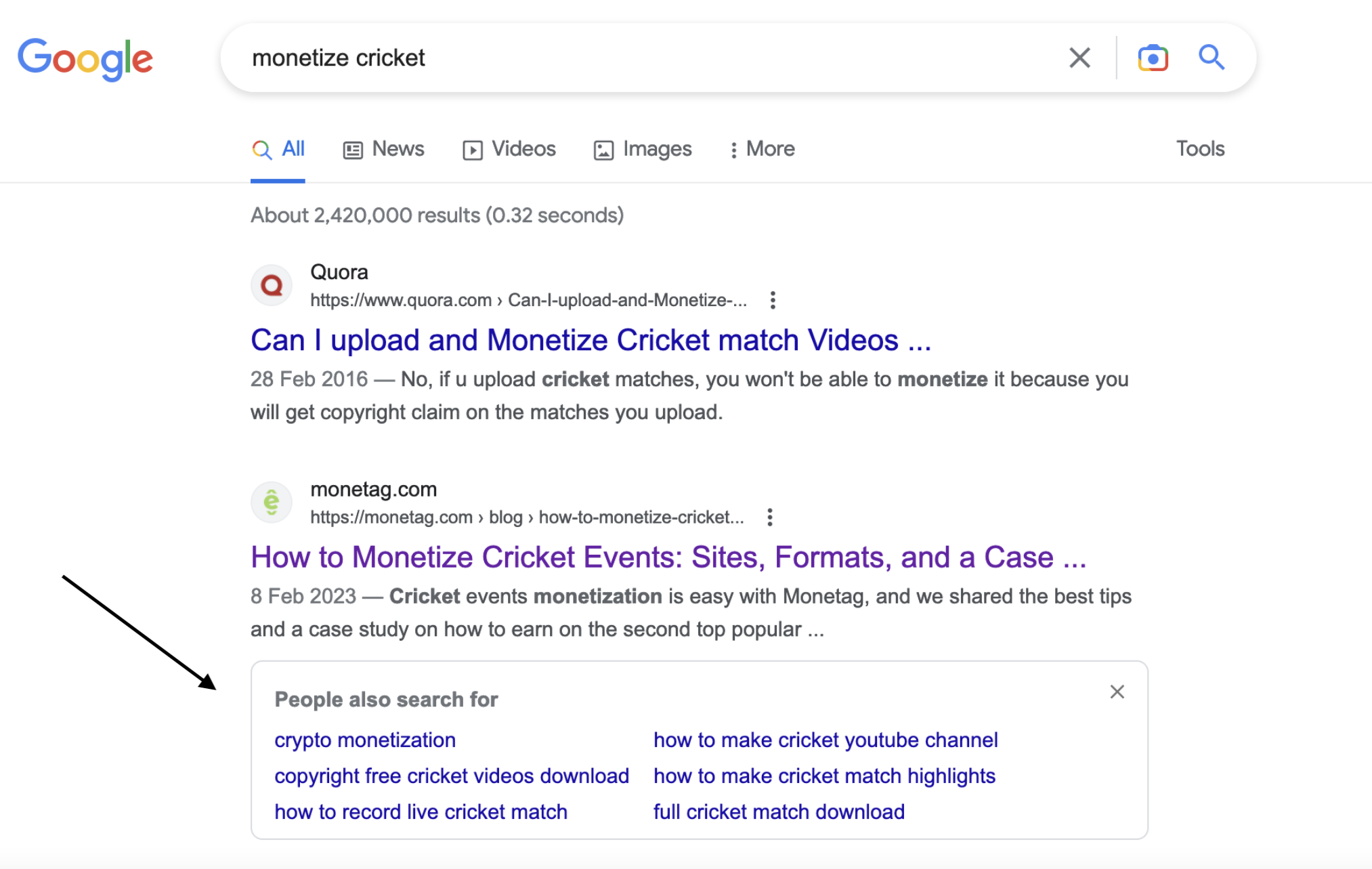
So if you type “monetize cricket” as your keyword, click on the result on the first SERP, conclude that’s not what you wanted to see, and press the back button right away, this is what you will find on the search engine page.
What’s the role of PASF in SEO?
In a way, “People also search for” is a tool website owners, affiliates, and SEO specialists can use to find keyword ideas and opportunities. But it does more than that.
Franyer Rivas gave an overview of PASF and its SEO potential:
“The PASF can be useful for SEO in several ways. First, it helps identify related themes that you can use to create additional content on a website. It can also help you better understand the user’s intent behind the original search, which can allow you to create content relevant to that intent. Also, if you can rank in the PASF suggestions, the website will have higher visibility in the search results.”
But then Abhishek Dey, SEO expert from PublisherGrowth and BlogNife went a bit deeper into the subject:
“PASF keyword databases are built keeping in mind context, intent, and semantic relevance and, thus, work best if your website has multiple content pages that target the search terms and its semantic terms as well. Once there is enough in the webpage and it ranks for a combination of semantic keywords, chances are higher that your webpages will be shown on top results whenever a “PASF keyword search is initiated”.
So here are three main reasons why PASF is of great importance for search engine optimization:
#1 Understanding user intent
Keywords that are presented in the PASF box are pulled directly from Google’s database. Therefore they represent the search terms of your targeted audience.
Using them in your content creates a fertile ground for attracting more organic traffic to your website. And therefore, improving ranking.
#2 Finding organic keywords
PASF has the ability to provide good long-tail keywords. And they are responsible for the majority of organic traffic – around 70%.
It’s tricky with choosing long-tail keywords because they usually don’t have high search volume, but they do have the highest engagement and the highest level of conversions.
Note: Some of the keywords PASF will suggest are relatively new and most regular keyword search tools won’t be able to find them. Use it as an advantage!
#3 Learning from your competition
To know where you stand with your competition, you can use PASF as a starting point.
After you enter your main query, just look at the PASF box and see what else is there. If you notice some of your competitors are appearing for related keyword, set your mind on optimizing your website for the same one.
Note: This can be very helpful when optimizing your presence in featured snippets.
“People also search for” statistics
Around 15.000 SERPs were monitored during a week, and the results showed that the “People also search for” box appeared in 58,74% of desktop searches.
That per se was surprising since nobody thought PASF had that sort of presence.
But then mobile SERP analyses were conducted, and the SEO and marketing industry was blown away – PASF was part of 87,02% mobile searches.
Also, since we are constantly mentioning the first SERP, we should mention this statistical data – only 0,63% of people go to the second page of Google search results.
Which is why it is essential to do all in your power to end up on it.
The difference between “People also search for” and “People also ask”
Even though people often confuse PASF and “People also ask” (PAA) when they see these boxes in SERP, they are not the same thing.
While “People always search for” presents a list of similar keywords, “People also ask” is actually a list of questions related to the main keyword a person entered in a Google search.
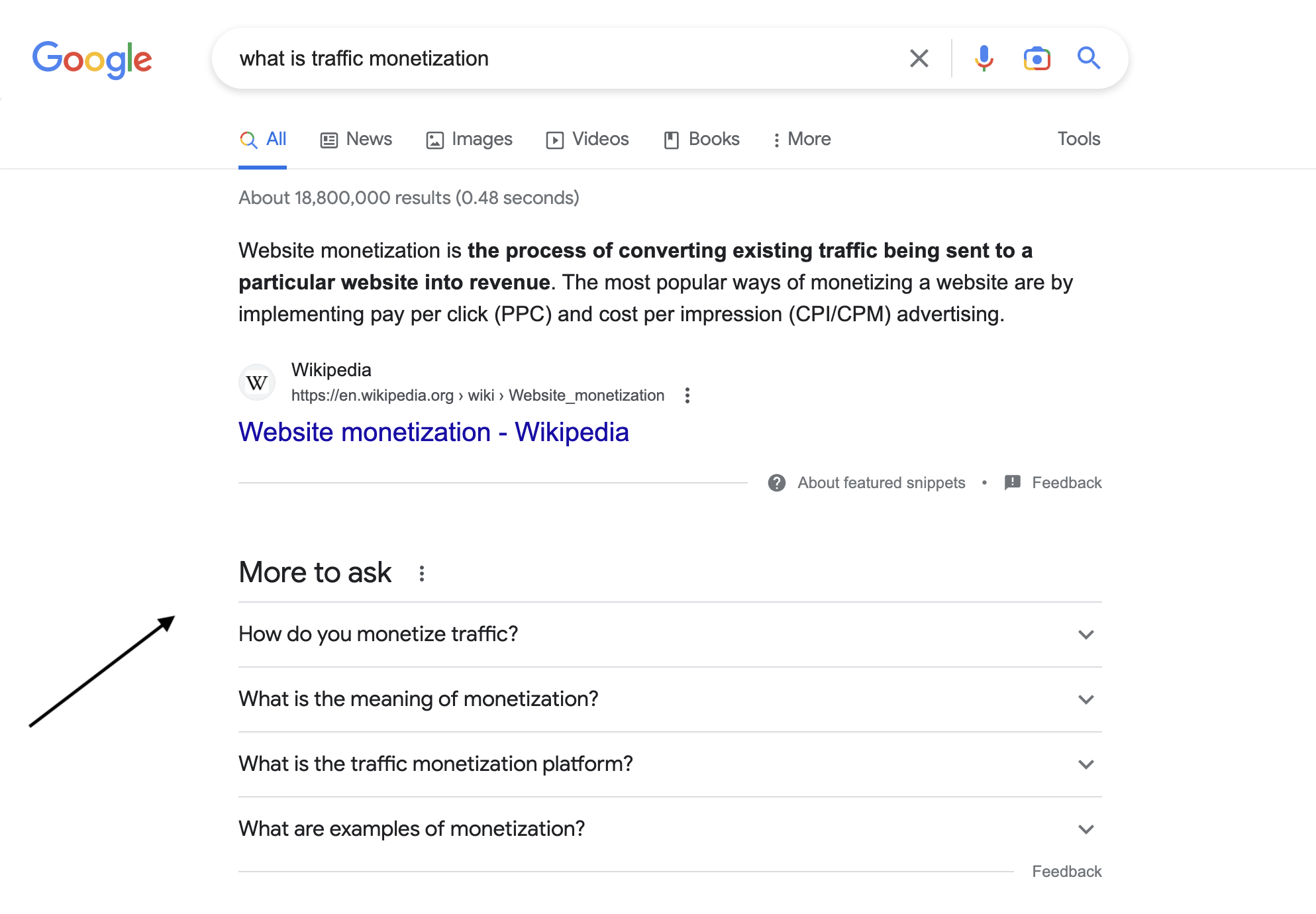
The questions that appear in the PAA box always contain an answer as well and can help with supplying additional information about the topic. So they are closely tied to the main search query.
Also, these answers are followed by a link to the webpage Google used as a reference to reply to the question.
How to appear in PAA?
You must be wondering now what it takes to find your site being linked to one of the PAA answers.
This is an absolutely legitimate question given this Google feature became an important ranking factor from a couple of years ago.
According to Semrush, around half of Google searches contain PAA, and 75% of the time, PAA will be in the top three results on SERP.
So if you would like to be included in the PAA box, here are some SEO advice you should follow:
- Structure your content around 5W questions – 86% of the time, PAA is based on queries starting with “why”, “who”, “when”, “where”, and “why”
- Analyze if your target keywords initiate PAA as a SERP feature
- Check which keywords your domain ranks for but not triggering PAA, and then use this opportunity to optimize content and target related questions
- Check if your content meets all SEO requirements (readability, keyword placement, structure, linking, etc.)
Note: It is possible to be part of PAA, and to rank on the first page of results at the same time.
How to use PASF to rank higher in search results?
So we finally came to the most important part – how to apply all this knowledge now, use the PASF in our favor, improve our SEO, and go up in Google search results?
You don’t have to be an SEO expert to improve your ranking status. “People also search for” is a super simple tool that could help you with that, but only if used correctly.
“PASF search queries can help you get keyword ideas or understand variations of a keyword when you’re doing keyword research. If you connect a tool where you can also analyze the monthly volume of those keywords, you could easily find high volume terms to create more content on your website related to your niche, or in some cases, you could find a variation of the same keyword that drives more traffic and optimize your URL/articles for it”,
– Servando Silva, SEO & Performance Marketing Specialist at ServandoSilva explained.
Here are the steps you can take:
#1 Keyword research
Choosing the right keyword is the essence of good SEO. It’s what helps Google locate your content and raise your status on SERP. It’s what makes you more visible to your target audience.
To use PASF for keyword research just pay attention to what the PASF box suggests. Then do the research on those keywords – see what the first SERP page is offering on them.
At this point, we would recommend using some keyword searching tools. It will show you the volume and the estimated strength of each selected keyword.
#2 Find content ideas
Content creators often rely on PASF to define new content ideas. Ones that are relevant to their targeted audience.
Take some keywords out of the PASF box and enter them as a main query in Google. Open several top-ranking pages and scan their content and their structure.
There you go, you have an idea of what to do next.
#3 Improve On-page SEO
On-site SEO is a never-ending process because you should be constantly working on improving your website’s ranking on Google.
“So basically, you optimize your website and pages for a specific target keyword, giving indicators to Google bots that your page provides the best value to the readers. And if the Google bots like your webpage, they will place you higher on search results for that particular keyword”,
– Finnich Vessal, owner of AffiliateBay, is laying it out.
PASF is not of crucial significance here, but it can help. After generating the right keywords we mentioned above, you just need to incorporate them in a proper way – in content, but also in title tags and URLs.
But make sure not to overuse them.
#4 Work on long-form content
There are always more opportunities to use keywords in a more natural way and at a natural pace within long-form articles and blog posts. And PASF can provide you with diverse but relevant keywords, which can only add to the quality of the text.
Also, long-form texts have more headings and subheadings that are ideal for keyword implementation.
#5 Get inspiration for FAQ
Many people decide not to include FAQs at the end of their posts, which is a mistake. This article section is super important when it comes to engaging your audience.
But more importantly, FAQs are pulled directly from the Google database, so they are more than relevant for your targeted audience.
It would be great if you could use some PASF keywords to create questions for the FAQ section.
Tips & Tricks on PASF from SEO experts
According to Abhishek Dey, these are the most useful tips on how to use PASF to rank higher on Google:
- Include FAQs on all web pages
- Organic interlinking across your website
- Try to rank in the top result for certain keywords to increase chances for PASF visibility
- Have the “Table of Contents” reference: here
“Getting ranked for PASF keywords requires some level of site authority. Because both the “related keywords” aka “people also search for” keyword terms and their search results are built over time and years of data.”
Finnich Vessal says that there are no quick ways to drive traffic with SEO and that a lot goes into the process. But he was willing to give some quick tips on PASF that could be helpful:
- Make sure to include the keyword in the title, sub-headings, image alt tags, meta title, and meta description
- Use Google autocomplete to get PASF and include them in your webpage.
- Create related pages supporting your main keyword. For example, if your main keyword is “best coffee|, you can create related pages on how to make coffee, the benefits of coffee, etc.
- Don’t target the same keyword from more than one page
- Interlink your related pages to give them a boost and pass link juice among themselves
And experience Franyer Rivas has from years of working as an SEO specialist brought this as PASF wisdom:
- Use keyword research tools to find PASF suggestions for the keywords you are looking to target
- Create relevant and useful content on your website for the keywords suggested by PASF
- Optimize content to respond to user intent behind searches related to PASF suggestions
- Try to position yourself in the PASF suggestions to increase the visibility of your website on Google
Finally, this is what Servando Silva had to say on the subject:
“I like using tools like SurferSEO or Ahrefs to get keyword data right on Google SERPs. Instead of just seeing a list of related keywords, you can quickly see the volume of traffic available and other metrics. Also, don’t forget to use PAA keywords and include them in your search articles to get more traffic and cover the article with all the questions your audience might have”.
Best tools to find PASF keywords
We will now suggest a couple of SEO tools that can help you find the PASF keywords. They are all reliable and can offer a quick solution to optimizing your website.
Remember that including PASF keywords can lead to reaching and targeting more potential visitors.
- Google’s SERP
This one was a no-brainer. It’s by far the easiest tool. And we have already explained how it works.
Enter a keyword in Google, click on the first result, go back right away, and the “People also search for ” box will present some keyword alternatives.
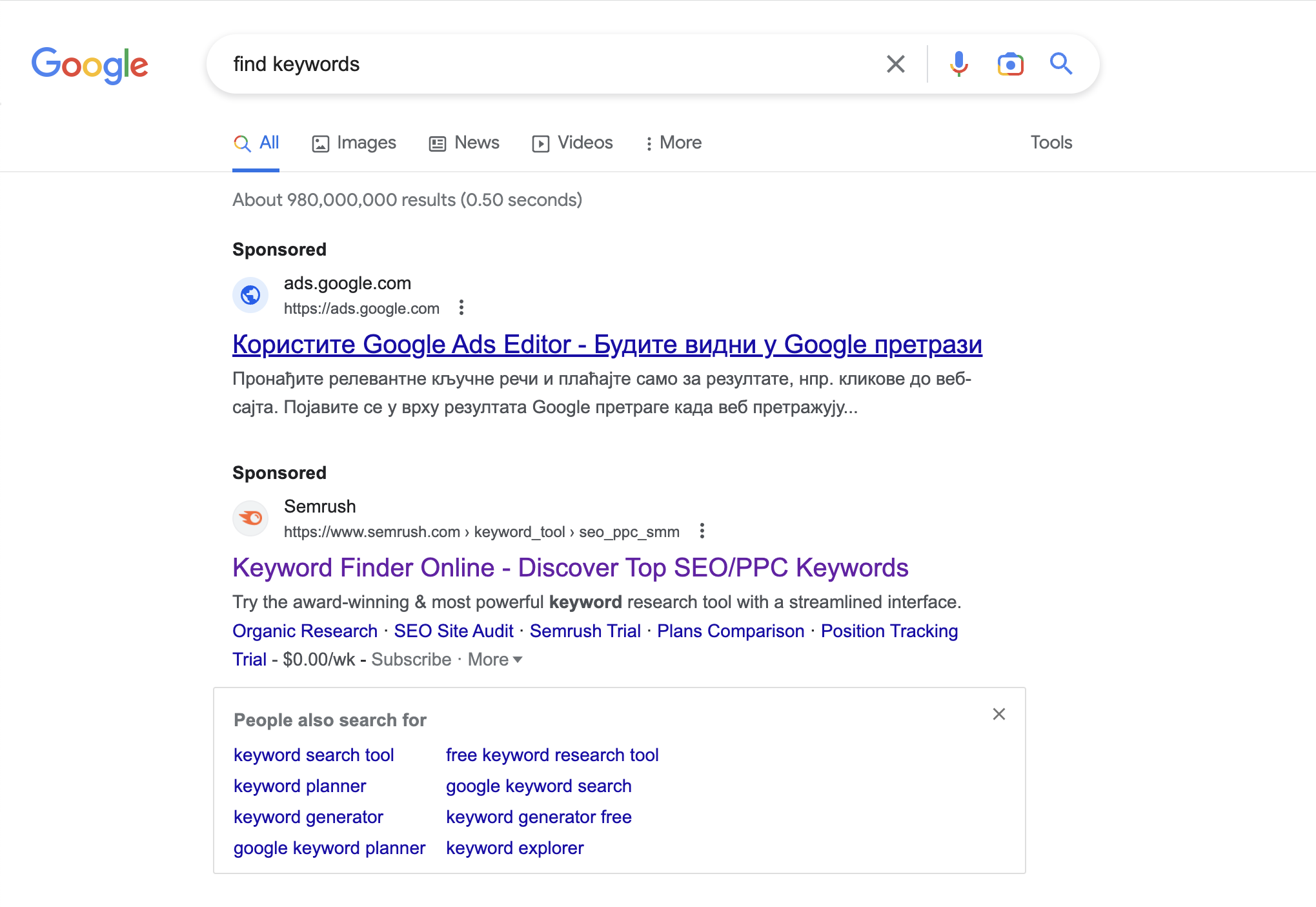
The most important thing is that Google’s search engine result page is always updated and shows all fresh results.
- Keywords Everywhere
This tool is Chrome’s free extension for keyword searches. It showcases two categories – Related keywords and PASF keywords, but the results are usually pretty similar.
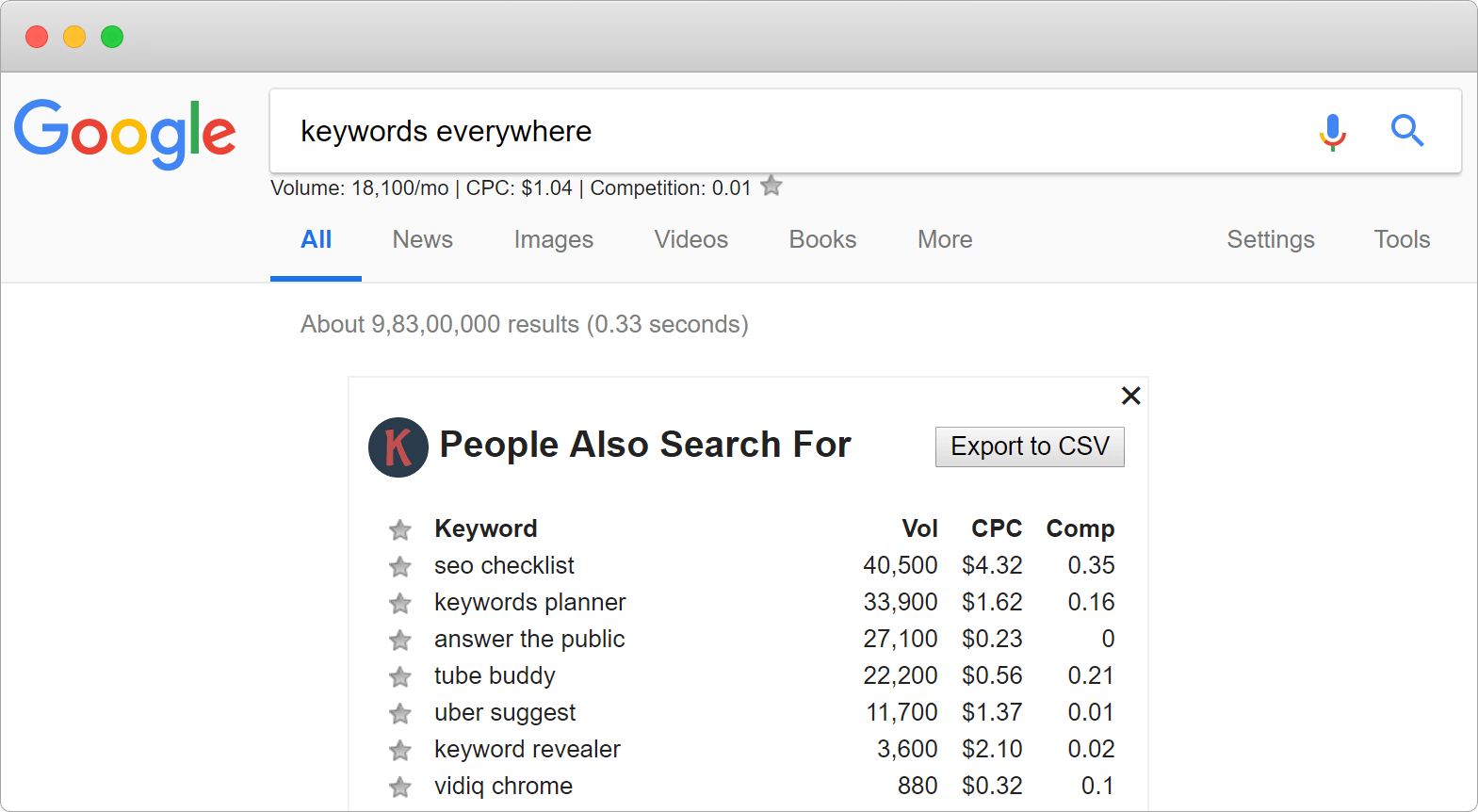
You will love that Keywords Everywhere presents results right there, in your Google search results, which is super convenient.
- Ahrefs
Ahrefs is a very professional SEO tool that offers so much more than PASF keywords. For each keyword, it lays out terms that match, but also Questions that are taken from Google’s PAA section, among everything else.
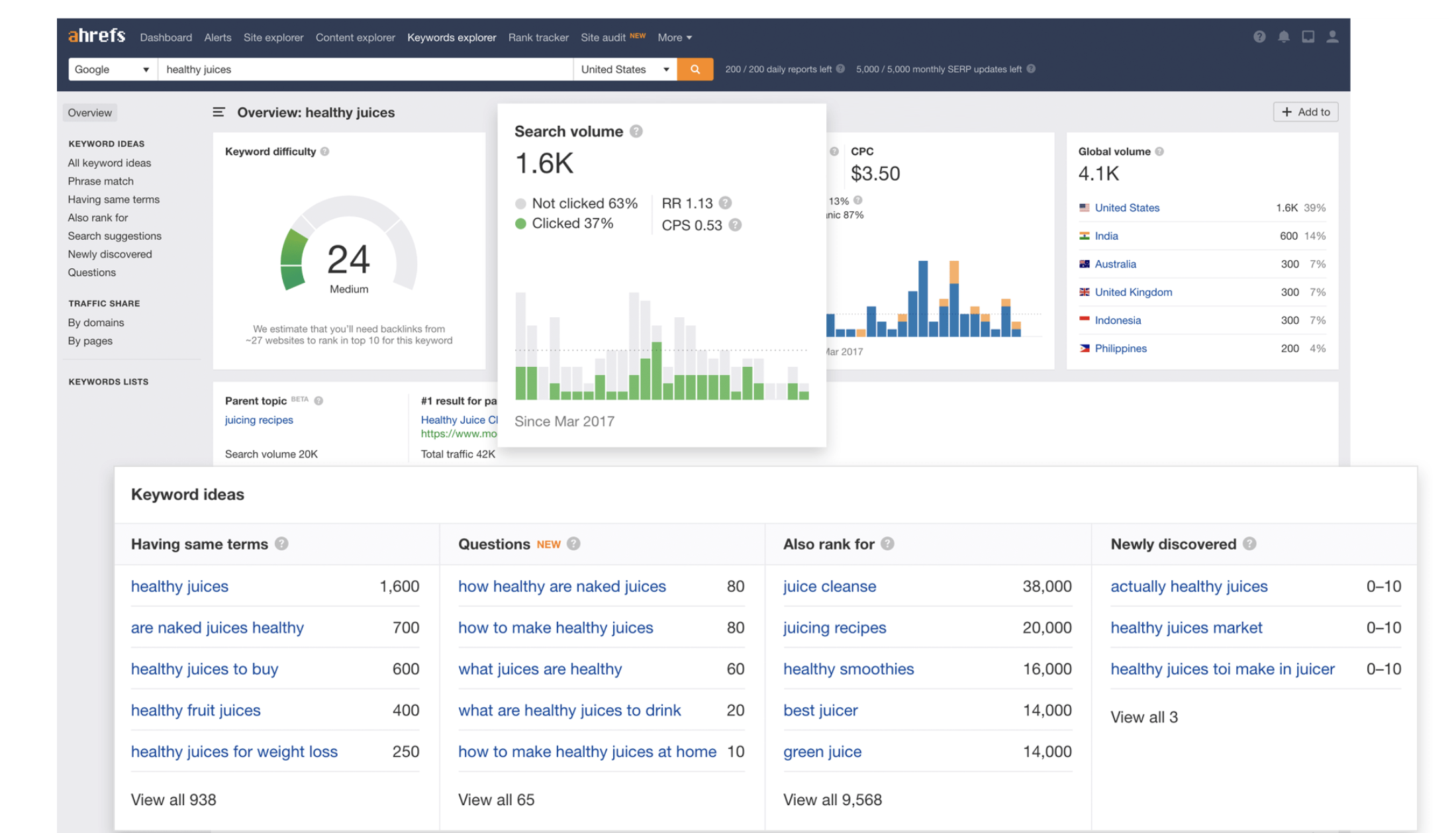
So if you are only looking to collect PASF keywords, skip Ahrefs because it’s quite pricey. But if you have a paid account please use it, it can really help achieve high search rankings.
- SemRush
SemRush is great for establishing what are the keywords your competition is ranking for, and then locating other similar keywords you might want to target.
You will be given valuable data on keyword search volume and difficulty, but also it can provide an assessment of traffic and clicks keywords can generate.
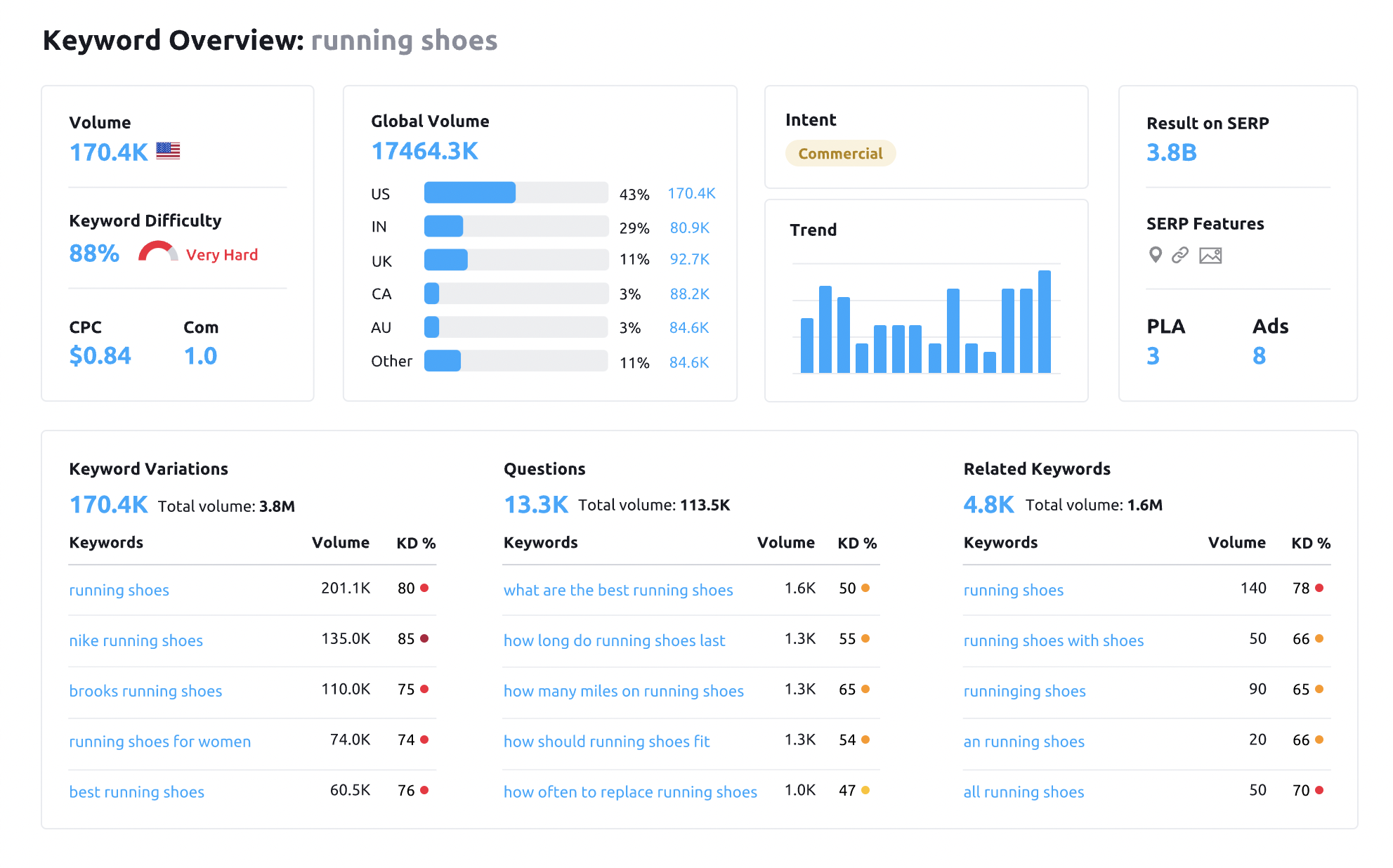
The best part is – SemRush Magic Tool can find some great long-tail keywords.
- Answer The Public
This tool right here is super helpful with content ideas and long-tail keywords. It is especially useful for creating PAA sections, as well as for defining headings in long-form posts.
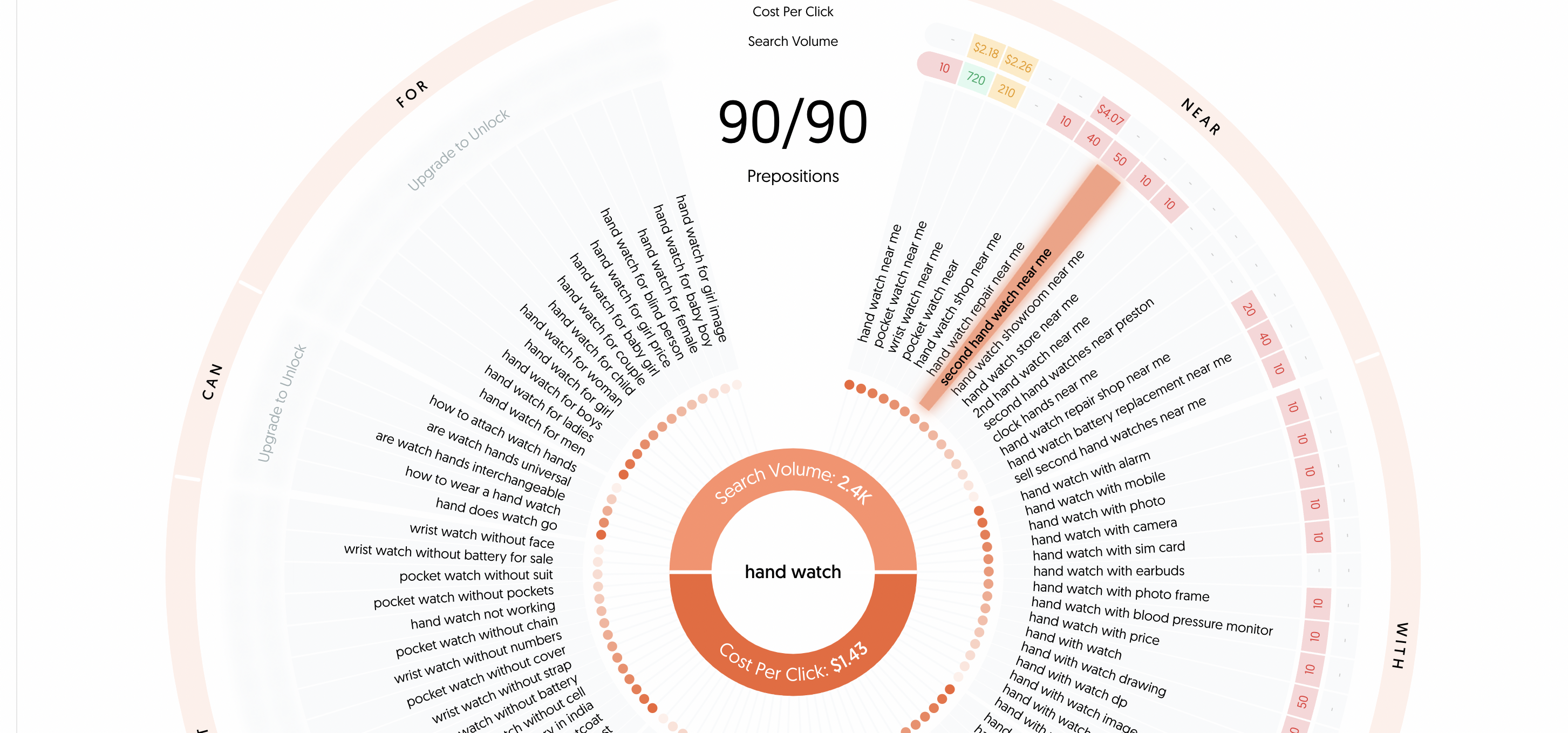
You may not find the exact PASF suggestions like with other tools, but Answer The Public can surely guide you in the right direction.
- Ubersuggest
Ubersuggest is one of the most popular free keyword search tools. In case you need PASF keywords this program can be of help since it will give information about keyword difficulty, its volume, but it will also name related keywords.
Besides this, thanks to its Content Ideas option, Ubersuggest can help you define topics for content targeting PASF keywords.
- Google Trends
If you want to get an insight into Google search statistics, Google Trends is a tool for you. It will show you how often a particular keyword has been searched, and whether or not it is worth targeting.
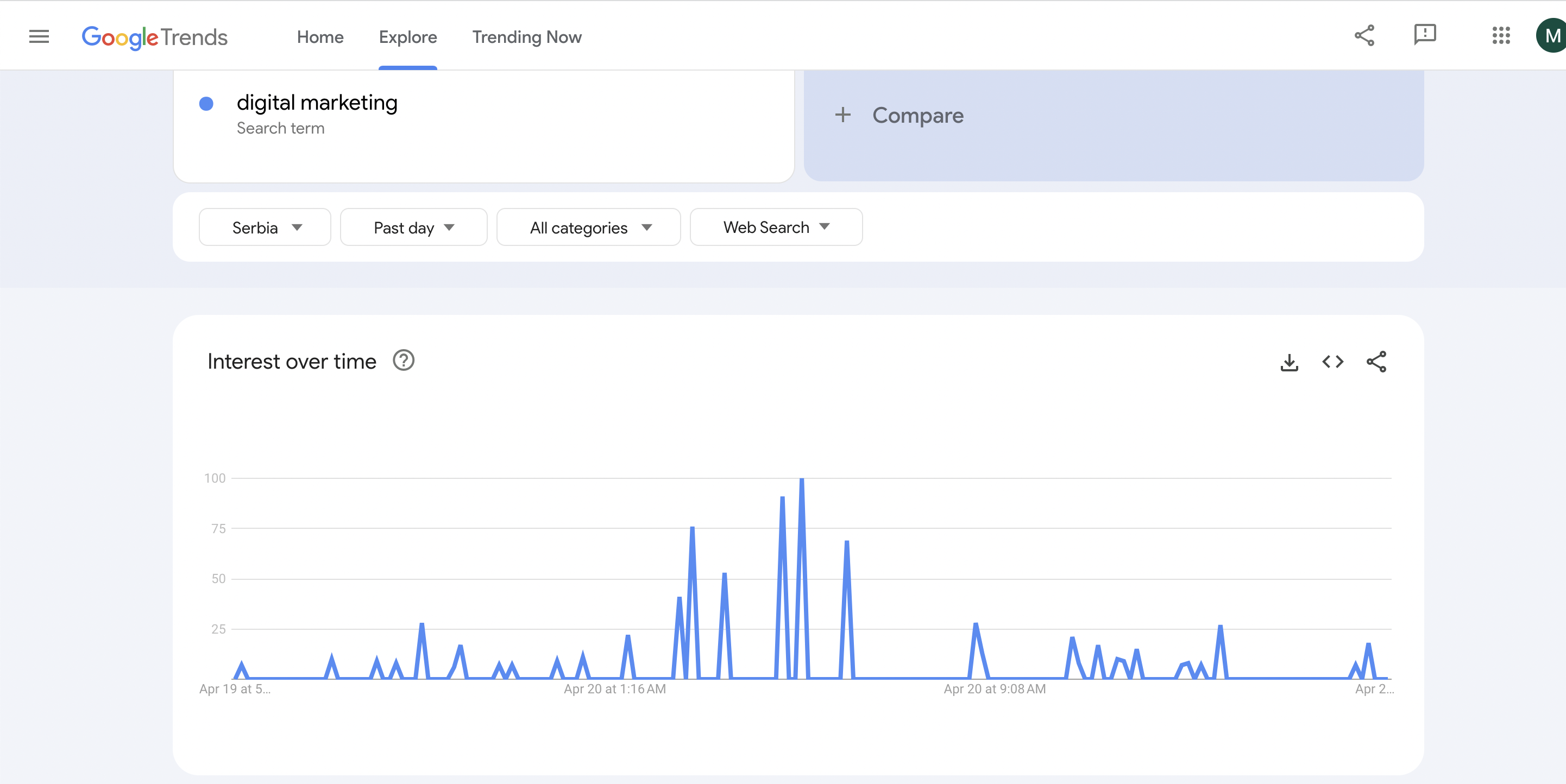
Also, it will showcase Related topics that could lead you to some PASF keywords that were not that obvious and therefore are easier to rank for.
Final Thoughts
To publishers and affiliates, Google can be the very best friend or the worst enemy.
But whatever the situation is, we all want to please this search engine. Desperately.
Because Google is the one deciding who ends up on the first SERP and who stays in the dust.
Stuck in deep SEO strategies, we often tend to forget about the power of keywords. To what extent they shape the SERP presented after every search that’s been made.
With “People also search for,” it’s all about what people are searching for right now. So the information you are going to get is super fresh and very relevant.






